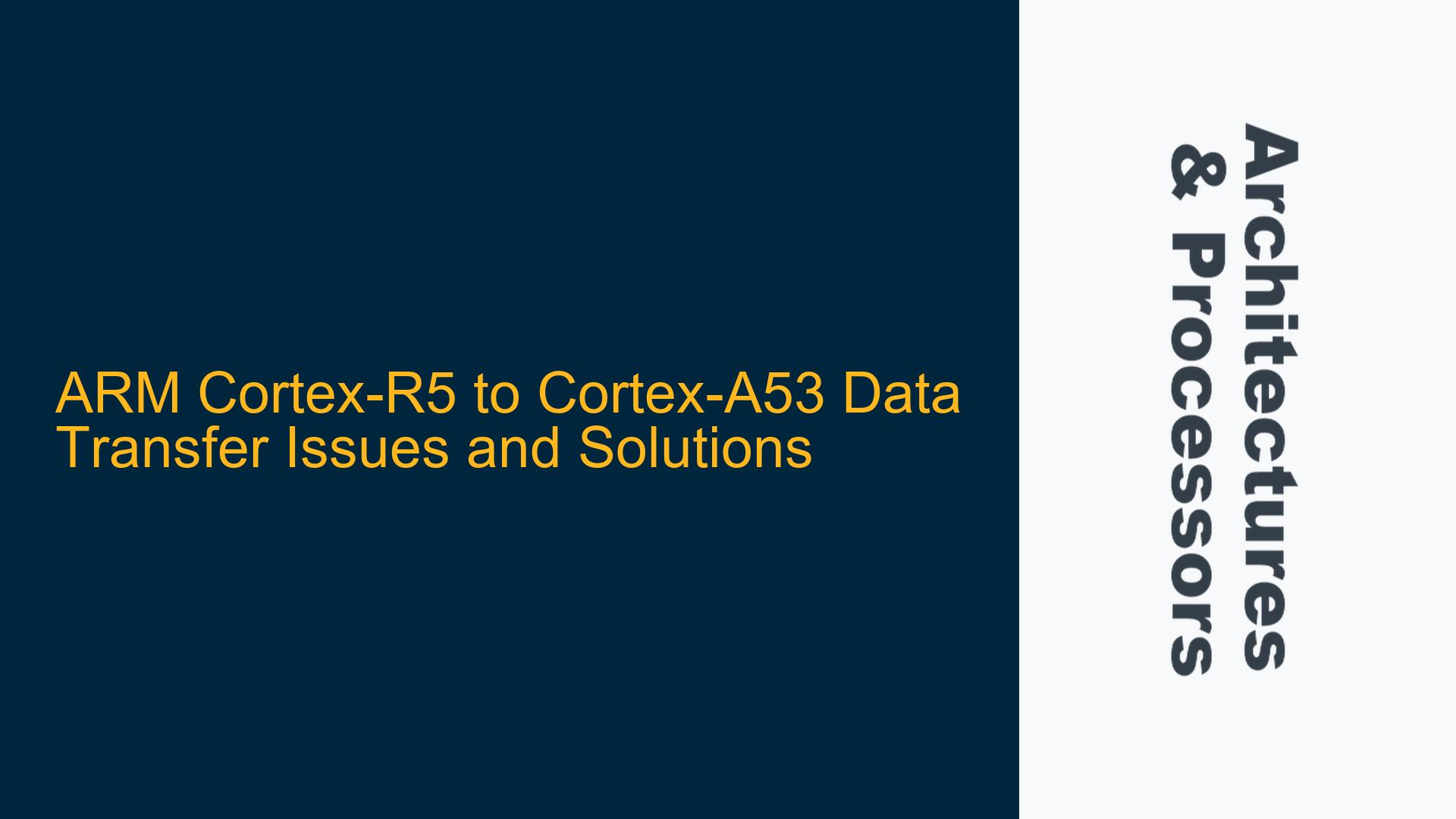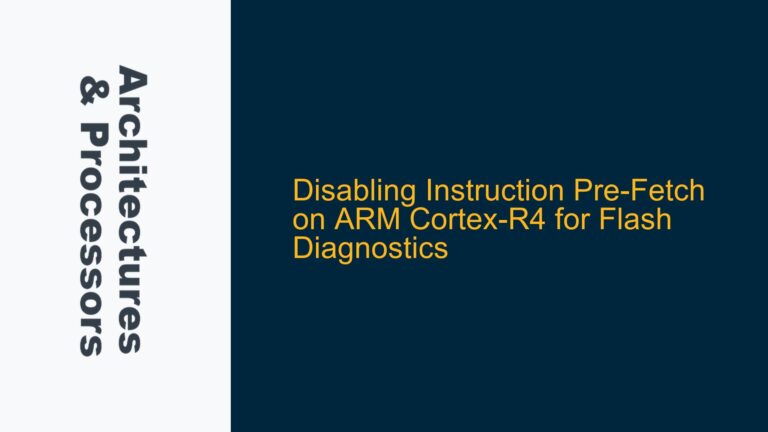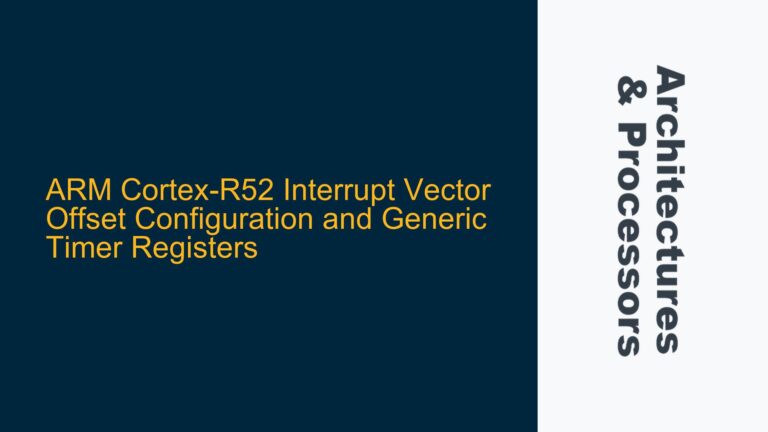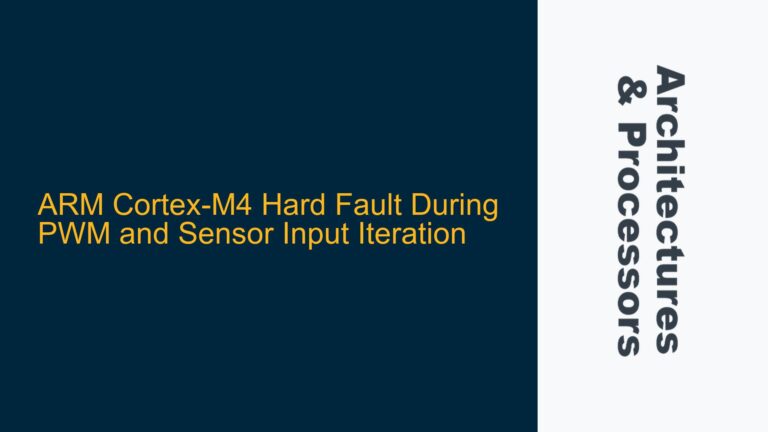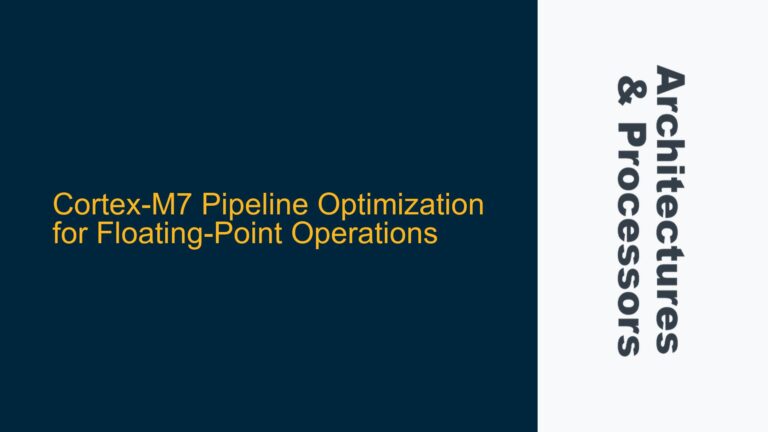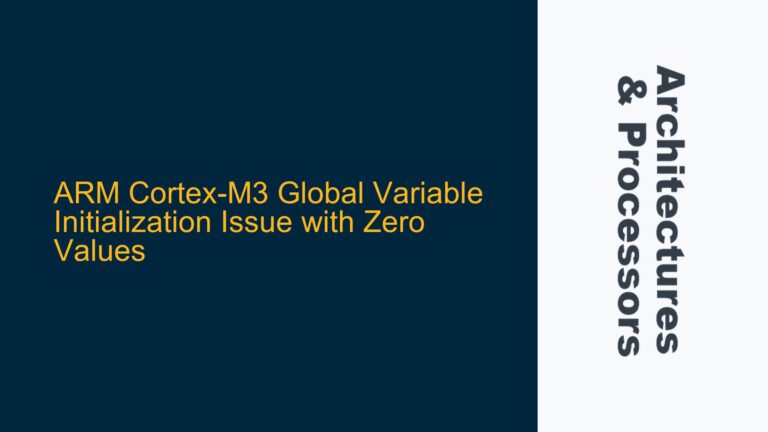ARM Cortex-R5 and Cortex-A53 Shared Memory Communication Challenges
The communication between ARM Cortex-R5 and Cortex-A53 processors using shared memory, such as On-Chip Memory (OCM) or Block RAM (BRAM), presents several challenges that can lead to data inconsistency, stale data reads, and synchronization issues. These problems often arise due to differences in the architectural features of the two processors, such as cache behavior, memory coherency, and interrupt handling mechanisms. The Cortex-R5 is designed for real-time applications and typically operates without a cache, while the Cortex-A53, being a high-performance application processor, heavily relies on caching for optimal performance. This architectural mismatch can cause significant issues when both processors attempt to access shared memory regions concurrently.
One of the primary issues observed is the occurrence of stale data reads, where the Cortex-A53 reads outdated data from its cache instead of fetching the newly written data from the shared memory. This problem is exacerbated when the Cortex-R5 writes data to the shared memory, but the Cortex-A53’s cache is not invalidated or updated to reflect the changes. Additionally, the lack of hardware-enforced cache coherency between the two processors further complicates the scenario, as the Cortex-A53’s cache may not automatically synchronize with the shared memory updates made by the Cortex-R5.
Another challenge is the efficient handshaking mechanism between the two processors. While shared memory can be used for data exchange, proper synchronization is required to ensure that both processors are aware of the data availability and can safely access the shared memory without causing race conditions or data corruption. This often involves the use of interrupts or polling mechanisms, which need to be carefully implemented to avoid performance bottlenecks or deadlocks.
Cache Coherency and Memory Barrier Omissions
The root cause of the stale data issue lies in the cache coherency mechanisms, or the lack thereof, between the Cortex-R5 and Cortex-A53 processors. The Cortex-A53 employs a sophisticated cache hierarchy, including Level 1 (L1) and Level 2 (L2) caches, to accelerate memory access. However, this caching mechanism can lead to inconsistencies when the Cortex-R5, which typically operates without a cache, writes data directly to the shared memory. Since the Cortex-A53’s cache is not automatically invalidated or updated when the Cortex-R5 modifies the shared memory, the Cortex-A53 may continue to read stale data from its cache.
Memory barriers and cache management instructions play a crucial role in ensuring data consistency between the two processors. Memory barriers, such as Data Synchronization Barriers (DSB) and Data Memory Barriers (DMB), are used to enforce the order of memory operations and ensure that all previous memory accesses are completed before proceeding to the next operation. However, the omission of these barriers can lead to unpredictable behavior, as the Cortex-A53 may read data from its cache before the Cortex-R5’s write operations are fully propagated to the shared memory.
Cache invalidation and flushing are also essential for maintaining data consistency. The Cortex-A53’s cache must be invalidated after the Cortex-R5 writes data to the shared memory to ensure that the Cortex-A53 fetches the updated data from the memory rather than relying on its cache. Similarly, cache flushing may be required before the Cortex-R5 reads data from the shared memory to ensure that any pending write operations from the Cortex-A53 are completed and the data is written back to the memory.
Implementing Data Synchronization Barriers and Cache Management
To address the issues of stale data and cache coherency, a combination of data synchronization barriers, cache management instructions, and proper handshaking mechanisms must be implemented. The following steps outline the recommended approach to ensure reliable data transfer between the Cortex-R5 and Cortex-A53 processors:
-
Disable Caching for Shared Memory Regions: As a preliminary step, consider disabling caching for the shared memory regions in the Cortex-A53’s Memory Management Unit (MMU) configuration. This ensures that all memory accesses to the shared region are performed directly on the memory, bypassing the cache. While this approach may impact performance, it eliminates the risk of stale data reads and simplifies the cache management process.
-
Use Data Synchronization Barriers: Insert Data Synchronization Barriers (DSB) and Data Memory Barriers (DMB) in the code to enforce the order of memory operations. For example, after the Cortex-R5 writes data to the shared memory, a DSB instruction should be executed to ensure that the write operation is completed before proceeding to the next instruction. Similarly, a DMB instruction can be used to ensure that memory accesses are ordered correctly, preventing the Cortex-A53 from reading stale data from its cache.
-
Invalidate Cortex-A53’s Cache: After the Cortex-R5 writes data to the shared memory, the Cortex-A53’s cache must be invalidated to ensure that it fetches the updated data from the memory. This can be achieved using the
DC IVAC(Data Cache Invalidate by Virtual Address to Point of Coherency) instruction, which invalidates the cache line corresponding to the shared memory address. Alternatively, the entire cache can be invalidated using theDC IALL(Data Cache Invalidate All) instruction, though this may have a higher performance overhead. -
Implement Handshaking Mechanisms: Use interrupts or polling mechanisms to synchronize data access between the Cortex-R5 and Cortex-A53. For example, the Cortex-R5 can trigger an interrupt to notify the Cortex-A53 that new data is available in the shared memory. The Cortex-A53 can then invalidate its cache and read the updated data. Alternatively, a polling mechanism can be implemented, where the Cortex-A53 periodically checks a flag in the shared memory to determine if new data is available.
-
Enable Snoop Control Unit (SCU) for Cache Coherency: If the system supports it, enable the Snoop Control Unit (SCU) in the Cortex-A53 cluster to enforce cache coherency between the Cortex-A53 cores. While the SCU does not directly support cache coherency with the Cortex-R5, it can help maintain consistency within the Cortex-A53 cluster, reducing the likelihood of stale data reads.
-
Optimize Memory Access Patterns: Ensure that the memory access patterns are optimized to minimize contention and improve performance. For example, align data structures to cache line boundaries to reduce the number of cache line invalidations required. Additionally, consider using double-buffering techniques to allow the Cortex-R5 and Cortex-A53 to access different buffers concurrently, reducing the need for frequent synchronization.
-
Monitor and Debug Cache Behavior: Use debugging tools, such as ARM’s CoreSight or Trace32, to monitor the cache behavior and identify potential issues. These tools can provide insights into cache hits, misses, and invalidations, helping to diagnose and resolve performance bottlenecks or data consistency issues.
By following these steps, the communication between the ARM Cortex-R5 and Cortex-A53 processors can be made more reliable and efficient, ensuring that data is consistently and accurately transferred between the two processors. Proper implementation of cache management, memory barriers, and synchronization mechanisms is essential to overcome the challenges posed by the architectural differences between the Cortex-R5 and Cortex-A53.
